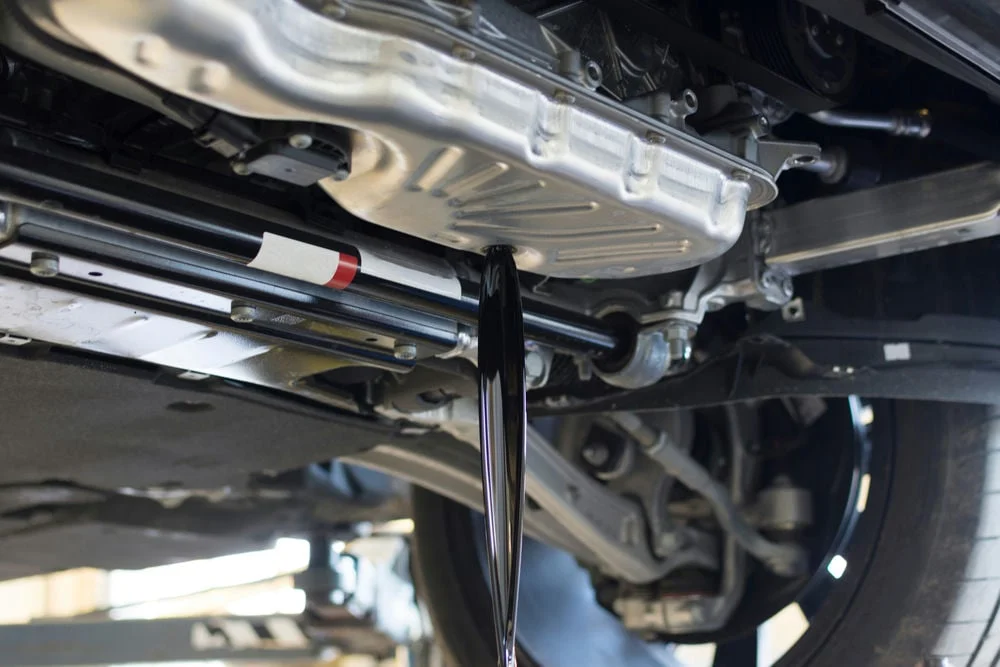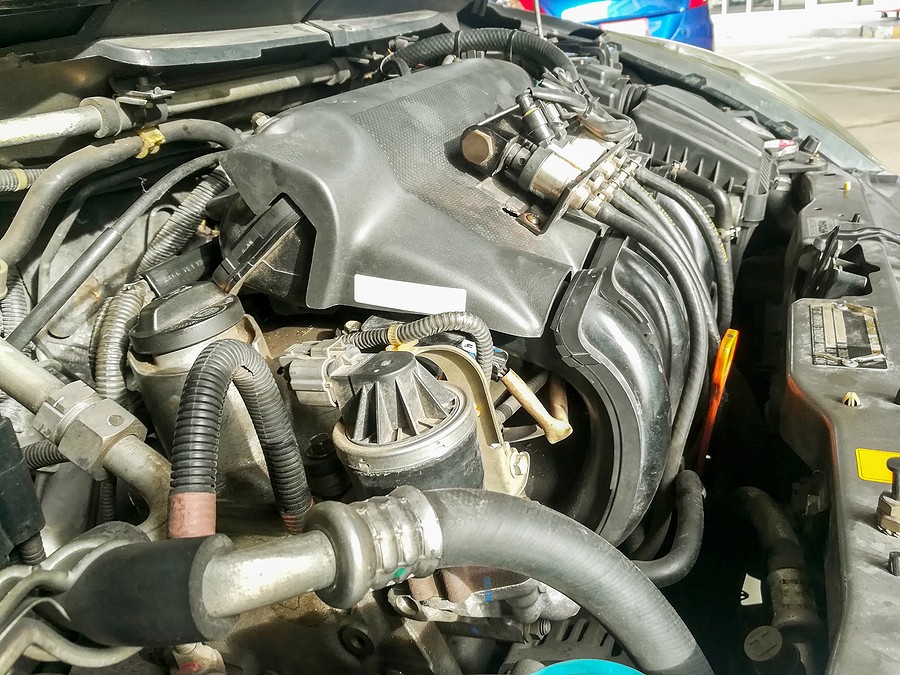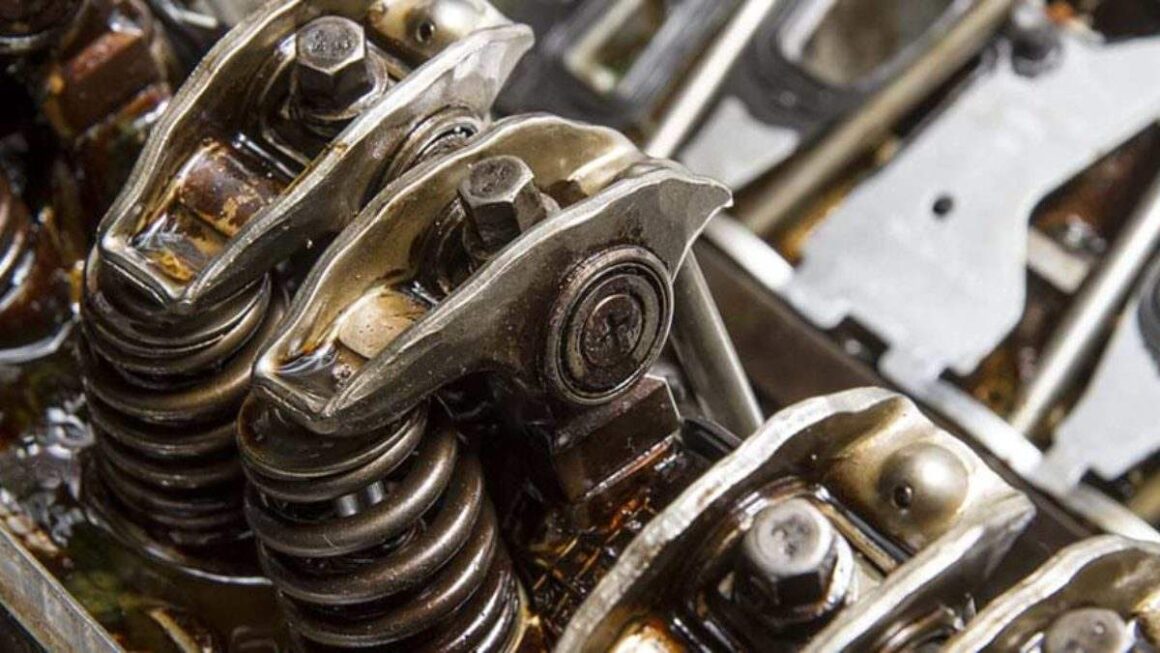Imagine you’re in your garage, looking at your car’s engine. It might not be the most exciting adventure, but it’s essential for keeping your car running smoothly.
Now, I’ve got a bottle of engine flush in one hand, and I’m wondering, “How long can you leave engine flush in?” It’s a question many car owners ask because we all want our engines to stay healthy.
You should leave the engine flush in your engine for approximately 5 to 10 minutes. This duration is generally recommended by most engine flush product manufacturers. It’s long enough for the special cleaning solution to circulate through the engine, breaking down and loosening the built-up sludge, contaminants, and deposits.
However, it’s not so long that it poses risks to your engine components or oil. Keeping within this timeframe ensures that you achieve the desired cleaning effect without causing any potential harm, making it a safe and effective practice for maintaining your engine’s health.
What is an Engine Flush?

An engine flush is a procedure used in vehicle maintenance to clean the internal components of an engine. It involves adding a specialized cleaning solution to the engine’s oil, which helps break down and remove built-up deposits, sludge, and contaminants. These accumulations can accumulate over time and hinder the engine’s performance.
During the flush, the engine is typically run for a short period, allowing the cleaning solution to circulate and remove the unwanted particles.
Once the process is complete, the old oil and cleaning solution are drained, and fresh engine oil is added, resulting in a cleaner and more efficient engine. Engine flushes are aimed at improving engine performance, extending its lifespan, and ensuring smoother oil flow.
How Does an Engine Flush Work?
An engine flush is a maintenance procedure designed to clean the internal components of an engine by removing sludge, deposits, and contaminants that can accumulate over time. It works through a systematic process that involves the use of a specialized cleaning solution.
Draining Old Oil
The engine flush process begins by draining the old engine oil from the vehicle. This is typically done by removing the oil drain plug, allowing the used oil to flow out into an oil pan. This step is crucial to ensure that the cleaning solution can access the internal components of the engine.
Adding Cleaning Solution
After the old oil has been completely drained, a specially formulated cleaning solution is introduced into the engine. This cleaning solution is designed to be gentle on the engine but highly effective at breaking down and dissolving sludge, deposits, and contaminants that may have accumulated over time.
Running the Engine
Once the cleaning solution is in place, the engine is started and allowed to run at idle for a specified period, usually ranging from 5 to 15 minutes. During this time, the engine flush solution circulates throughout the engine, reaching various components and effectively dislodging the accumulated deposits.
Loosening Deposits
The cleaning solution works by softening and dislodging the sludge and deposits within the engine. It breaks down these contaminants, making them easier to remove during the flushing process.
Draining the Cleaning Solution
After the recommended flush time has passed, the cleaning solution, along with the dislodged contaminants, is drained from the engine. This is accomplished by once again removing the oil drain plug, allowing the solution to flow into the oil pan. It’s important to note that the oil pan may need to be cleaned or replaced due to the presence of the cleaning solution.
Adding Fresh Oil
To finalize the engine flush process, fresh engine oil, along with a new oil filter, is added to the engine. This clean oil ensures that the engine is properly lubricated and ready for continued and optimized operation.
In summary, an engine flush is a systematic procedure aimed at enhancing engine performance, improving fuel efficiency, and extending the overall lifespan of the engine. By effectively removing harmful deposits, the engine can operate more efficiently.
It’s important to follow the manufacturer’s recommendations for the specific engine flush product being used and to avoid aggressive flushing, which could potentially dislodge large debris and lead to blockages or other complications.
How Often Can You Use Engine Flush?
Engine flushes can be beneficial for maintaining your vehicle’s engine, but it’s essential to know how often you can safely use them without causing harm. The frequency of engine flushes depends on several factors, including your vehicle’s age, mileage, and maintenance history.
Vehicle Age and Maintenance History
If you have a relatively new vehicle with low mileage and a history of regular oil changes, you may not need to perform engine flushes frequently. In such cases, an engine flush every 30,000 to 50,000 miles or every couple of years may be sufficient.
High Mileage or Neglected Maintenance
For older vehicles with higher mileage or a history of neglected oil changes, engine flushes may be more beneficial. You can consider performing an engine flush every 15,000 to 30,000 miles to help remove accumulated deposits and sludge.
Consult Your Vehicle’s Manual
Always refer to your vehicle’s owner’s manual for manufacturer-specific recommendations regarding engine maintenance, including engine flushes. Some automakers may advise against engine flushing altogether, while others may provide guidelines on when and how to use engine flush products.
Symptoms and Performance
Pay attention to your vehicle’s performance and any symptoms that may indicate the need for an engine flush. If you notice decreased engine performance, reduced fuel efficiency, or engine-related issues like oil leaks, it might be time for a flush.
Professional Advice
When in doubt, consult with a qualified mechanic or service technician. They can assess your vehicle’s specific needs and recommend the appropriate maintenance schedule, including whether an engine flush is necessary.
Use Caution with Aggressive Flushes
It’s important to exercise caution with aggressive engine flushes that promise rapid and thorough cleaning. These products can potentially dislodge large debris, causing blockages or engine damage if used too frequently.
What Happens If You Leave Engine Flush in Too Long?
Leaving the engine flush in your engine for an extended period can have unintended consequences and potential risks. While engine flushes are designed to clean the internal components of your engine, it’s essential to follow the recommended duration specified by the product manufacturer.
Damage to Engine Components
Extended exposure to the engine flush solution can lead to damage to various engine components. The cleaning agents in the solution are potent, and if left in the engine for too long, they may begin to corrode or deteriorate engine parts. This can include seals, gaskets, and even the engine’s internal surfaces.
Thinning of Engine Oil
Engine flush solutions can thin the engine oil as they continue to circulate, which can affect the lubrication properties of the oil. Extended thinning of the oil can reduce its ability to provide proper lubrication to critical engine components, potentially causing premature wear and damage.
Oil Filter Overloading
As the engine flush solution breaks down deposits and contaminants, it can dislodge them into the oil, turning them into suspended particles. If the flush solution is left in too long, these particles can overload the oil filter, potentially leading to reduced oil flow and decreased filtration efficiency.
Oil Pump Strain
Prolonged exposure to engine flush can put added strain on the oil pump. The thinner oil and potential blockages from dislodged particles can make it more challenging for the oil pump to circulate oil effectively, increasing the risk of pump damage.
Potential Leaks
The aggressive cleaning action of the flush solution may cause seals and gaskets to swell or become damaged if left in contact for an extended period. This can lead to oil leaks, compromising engine performance and safety.
Engine Performance Issues
Over time, extended use of engine flush can lead to engine performance problems. Thinning oil, damaged components, and reduced lubrication can result in reduced power, decreased fuel efficiency, and even engine overheating.
Costly Repairs
In extreme cases, leaving engine flush in too long can lead to significant engine damage, necessitating costly repairs or even engine replacement. These repairs can be much more expensive than the initial cost of an engine flush.
To avoid these risks, it’s crucial to strictly adhere to the recommended duration provided by the engine flush product’s manufacturer.
Typically, this duration falls within the range of 5 to 10 minutes. Following manufacturer guidelines and conducting engine flushes as part of a well-maintained routine can help ensure that your engine remains clean and in good working condition without introducing unnecessary risks.
If you have any concerns or questions about performing an engine flush, consult with a qualified mechanic for guidance tailored to your specific vehicle and maintenance needs.
What Are The Benefits Of An Engine Flush
Engine flushing is a maintenance procedure designed to enhance the performance and longevity of a vehicle’s engine by removing accumulated sludge, deposits, and contaminants from its internal components.
This process contributes to improved engine efficiency, translating into benefits such as heightened fuel efficiency and overall better performance. By ensuring that oil passages and critical engine parts remain clear, engine flushing can prolong the engine’s life, prevent potential damage caused by clogs or reduced oil pressure, and restore lost engine efficiency, especially in vehicles lacking regular maintenance or subjected to harsh driving conditions.
Furthermore, it promotes quieter engine operation, reduces harmful emissions, and removes harmful contaminants like metal particles and debris, thus contributing to a more environmentally friendly vehicle.
Nonetheless, it’s crucial to use engine flushes judiciously, adhering to manufacturer guidelines and seeking professional advice if necessary, as overuse or aggressive flushing can potentially dislodge large debris, cause oil leaks, or even damage the engine.
Therefore, engine flushing can be a valuable tool in maintaining engine health, but its frequency and application should be determined based on factors such as the vehicle’s age, mileage, and maintenance history, ensuring it complements, rather than replaces, routine oil changes for optimal results and long-term engine performance.
When Should You Consider an Engine Flush?

Engine flushing can be a valuable maintenance procedure, but it’s essential to know when it’s appropriate to consider this service for your vehicle.
High Mileage Vehicles
If your vehicle has accumulated high mileage, it may be more prone to sludge and deposit buildup within the engine. Consider an engine flush as part of your maintenance routine to help remove these accumulations and extend the engine’s life.
Poor Maintenance History
Vehicles with a history of irregular oil changes or neglecting maintenance schedules are more likely to benefit from engine flushing. Sludge and deposits can accumulate faster in such cases, impacting engine performance.
Decreased Engine Performance
If you notice a decline in your vehicle’s engine performance, such as reduced power, rough idling, or poor acceleration, it could be a sign of deposit buildup. An engine flush can help restore lost performance by clearing obstructions.
Oil Pressure Issues
Low oil pressure can result from clogged oil passages due to deposits. If you’ve experienced oil pressure problems, an engine flush may help improve oil circulation and pressure.
Vehicle Age
As vehicles age, they may become more susceptible to deposit buildup. If your vehicle is older, even if it has low mileage, an engine flush can be a proactive measure to maintain engine health.
Prior to Oil Changes
Some vehicle owners choose to perform an engine flush just before an oil change. This can help ensure that the fresh oil operates in a cleaner engine environment, maximizing its effectiveness.
Switching to Synthetic Oil
If you’re transitioning from conventional oil to synthetic oil, an engine flush can be beneficial. Synthetic oil is known for its cleaning properties, and an engine flush can prepare the engine for the switch, ensuring optimal performance.
After a Long Period of Inactivity
If your vehicle has been inactive for an extended period, deposits may have settled in the engine. An engine flush can help remove these deposits before putting the vehicle back into regular use.
Professional Assessment
When in doubt, seek the advice of a qualified mechanic or service technician. They can assess your vehicle’s specific needs and recommend whether an engine flush is appropriate based on its age, mileage, and maintenance history.
FAQ
What are the risks of engine flush?
Engine flushes can dislodge debris, potentially causing blockages or oil leaks if used excessively or aggressively.
Does engine flush improve performance?
Yes, engine flushes can enhance engine performance by removing deposits and improving oil flow.
Can engine flush reduce oil consumption?
Engine flushes can help reduce oil consumption by keeping oil passages clear and improving lubrication.
Will engine flush remove carbon?
Yes, engine flushes can remove carbon deposits, enhancing engine efficiency.
Will engine flush help with overheating?
Engine flushes can help prevent overheating by improving coolant flow and reducing blockages.
Does coolant flush help AC?
No, a coolant flush is unrelated to the AC system. It focuses on the engine’s cooling system.
Will a car run better after a coolant flush?
Yes, a car can run better after a coolant flush by maintaining the cooling system’s efficiency.
Why is my car overheating after a coolant flush?
Overheating after a coolant flush may indicate an air pocket or other issues; consult a mechanic.
Can radiator flush damage the engine?
When done correctly, radiator flushes don’t damage the engine but can improve cooling.
What are signs that you need a coolant flush?
Signs include overheating, coolant discoloration, and reduced cooling system efficiency.
Final words
The question of how long you can leave an engine flush in your vehicle comes down to following the manufacturer’s recommendations and adhering to best practices. Engine flushes can be a helpful tool in maintaining a clean and efficient engine, but they should be used judiciously and in accordance with your vehicle’s specific needs.
It’s crucial to avoid prolonged exposure to engine flush solutions, as leaving them in for too long can lead to unintended consequences, such as dislodging large debris or causing oil leaks. Instead, always follow the guidelines provided by the manufacturer of the engine flush product you choose, which typically recommend an idle period of 5 to 15 minutes.
By doing so, you can enjoy the benefits of improved engine performance, extended engine life, and enhanced fuel efficiency without undue risks. And as always, when in doubt, seek advice from a qualified mechanic or service technician who can assess your vehicle’s requirements and ensure that your engine flush is performed safely and effectively.



